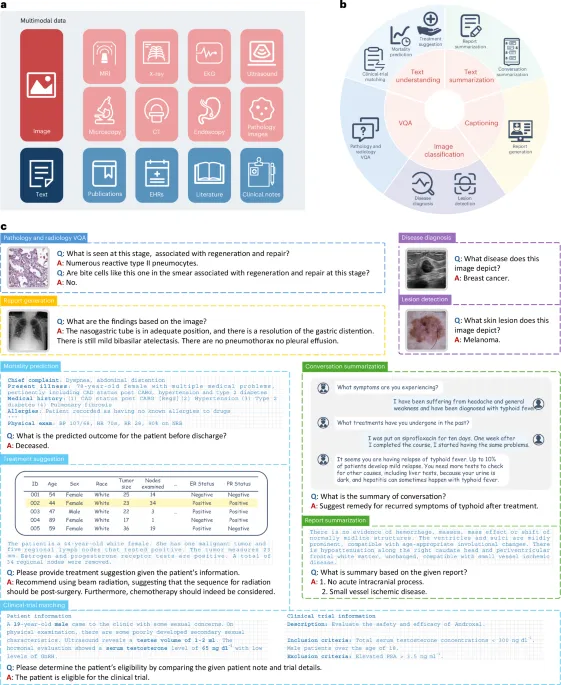Unlocking the Potential of BiomedGPT in Biomedical AI

Overview of BiomedGPT
Traditional biomedical artificial intelligence (AI) models are often specialized for specific tasks, leading to limited flexibility when applied in real-world scenarios.
Generalist AI presents a viable solution by offering versatility in interpreting diverse data types and generating customized outputs. However, many existing biomedical generalist AI models are typically heavyweight and closed-source.
Introduction to BiomedGPT
Here, we introduce BiomedGPT, the first open-source and lightweight vision-language foundation model tailored for various biomedical tasks.
- BiomedGPT achieves state-of-the-art results in 16 out of 25 experiments.
- It is computing-friendly, making it accessible to a broader range of users.
- Human evaluations confirm strong capabilities in radiology visual question answering, report generation, and summarization.
Performance Highlights
- BiomedGPT displays a low error rate of 3.8% in question answering.
- For complex radiology reports, it maintains a satisfactory error rate of 8.3%.
- In summarization, it exhibits a preference score closely matching that of human experts.
Conclusion
This research demonstrates that effective training with diverse data can lead to more practical biomedical AI solutions, significantly improving diagnosis and workflow efficiency.
This article was prepared using information from open sources in accordance with the principles of Ethical Policy. The editorial team is not responsible for absolute accuracy, as it relies on data from the sources referenced.